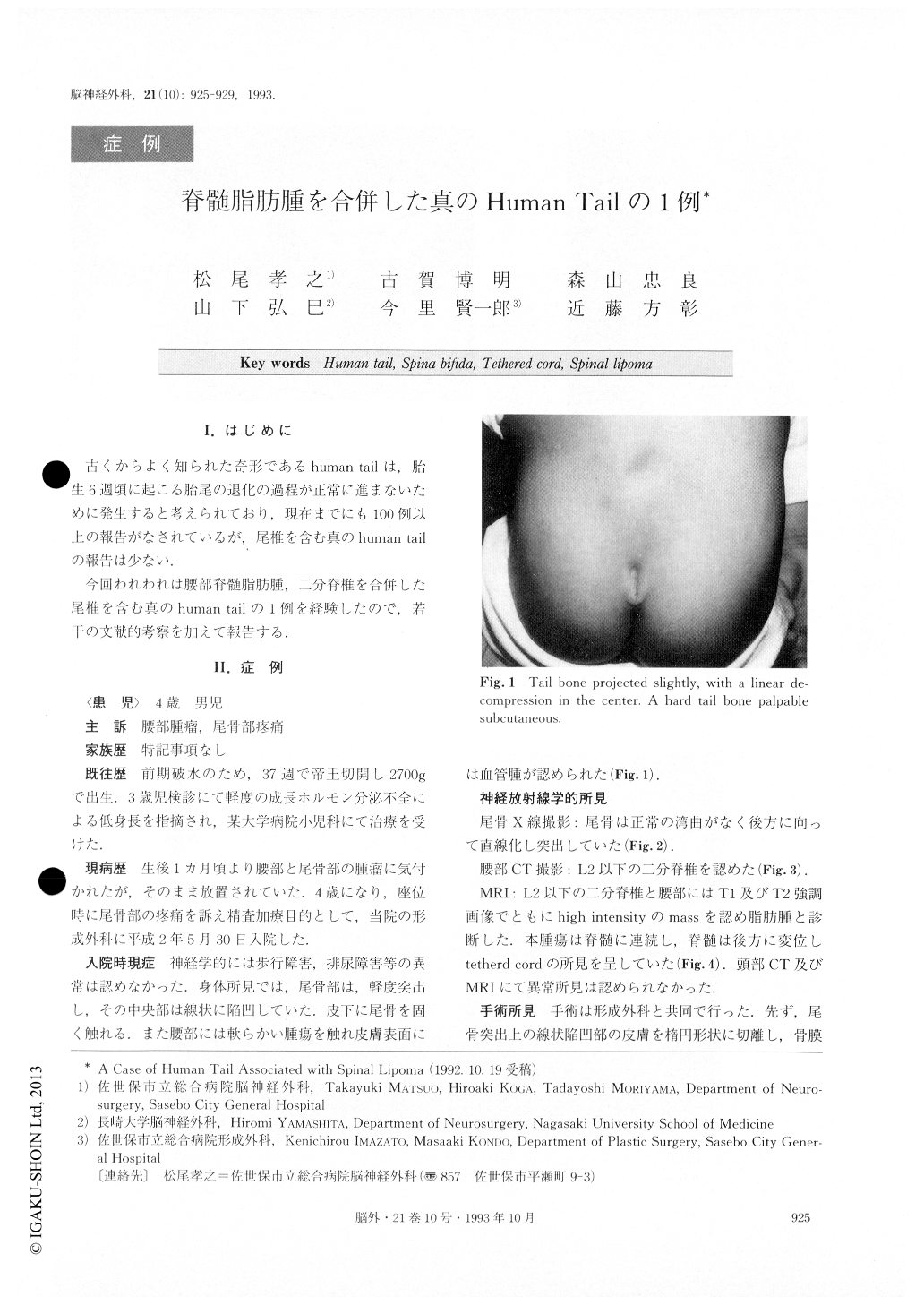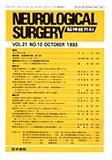Japanese
English
- 有料閲覧
- Abstract 文献概要
- 1ページ目 Look Inside
I.はじめに
古くからよく知られた奇形であるhuman tailは,胎生6週頃に起こる胎尾の退化の過程が正常に進まないために発生すると考えられており,現在までにも100例以上の報告がなされているが,尾椎を含む真のhuman tailの報告は少ない.
今回われわれは腰部脊髄脂肪腫,二分脊椎を合併した尾椎を含む真のhuman tailの1例を経験したので,若干の文献的考察を加えて報告する.
Human tails have been attributed to a disturbance in fetal tail regression which normally occurs at the gesta-tion age of about 6 weeks. To (late, more than WO cases of human tails have been reported. However, re-ports of true human tails, which involve the coccygeal vertebrae, are rare. We recently encountered a patient with a true human tail which involved the coccygeal vertebrae and was accompanied by lumbar spinal lipo-ma and spina bifida.
A four-year-old boy was brought to our clinic with complaints primarily of painful mass. The boy had no neurological abnormalities. Physically, a tail bone pro-jected, slightly in the lumbar area, with a linear de-pression in the center. A hard tail bone was palpable subcutaneously. A soft mass was palpable in the lum-bar region, which was accompanied by hemangioma on the superficial layer of the skin in this region. On X-ray films, the tail bone lacked the normal curvature and it projected linearly in the posterior direction. CT scans revealed spina bifida at the level below L2. MRI dis-closed spina bifida (at the level below L2), spinal lipo-ma and a tethered cord. During surgery, the tail bone was first resected over a distance of one and a half ver-tebral bodies. The lumbar tumor, which continued into the spinal canal, was removed as completely as possible after incision of the dura mater. To free the tethered cord, the tensioned, hypertrophic filum terminale was dissected.
Although the morphological diagnosis of this condi-tion is easy, the high incidence of complication by other anomalies makes it essential to perform thorough preoperative examinations with CT and MRI. Both the human tail involving the coccygeal vertebrae and the human tail that does not involve the coccygeal verte-brae can be satisfactorily treated by simple resection. Occasionally, restiform material or lipoma extends into the spinal canal. If these lesions are left untreated, tethered cord syndrome can develop. In such cases, tethering needs to be freed by resecting the lipoma and other lesions as completely as possible.

Copyright © 1993, Igaku-Shoin Ltd. All rights reserved.


